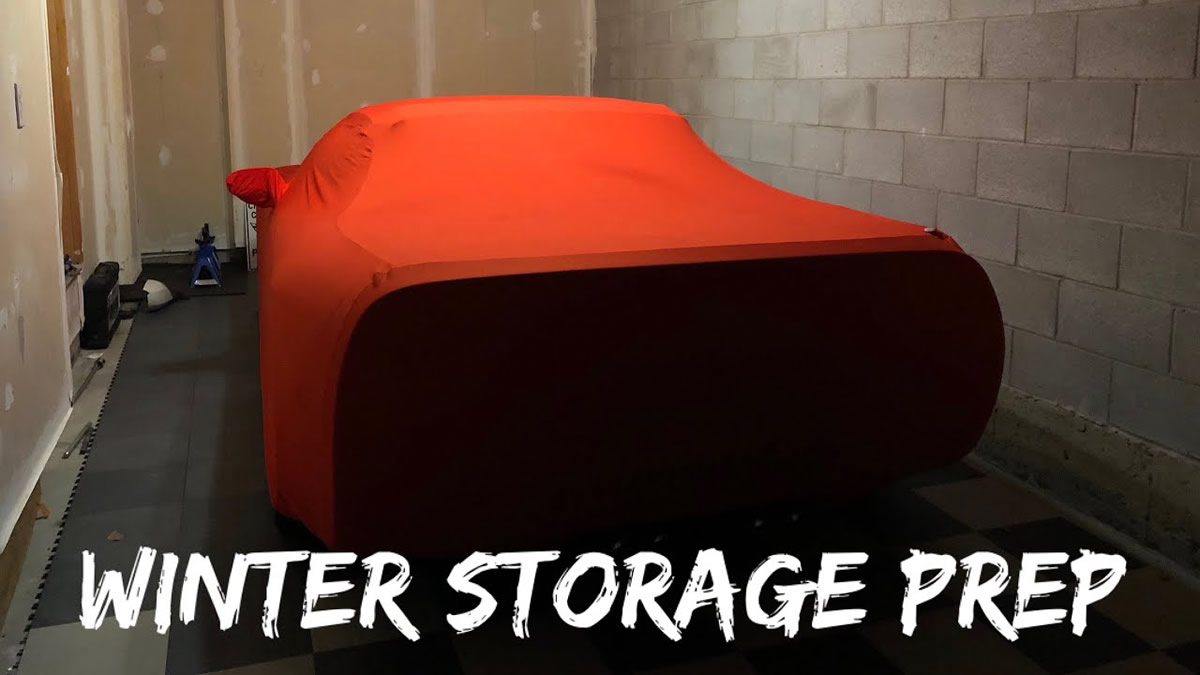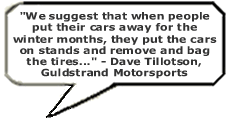Corvette Long-Term / Winter Storage - Page 1 of 4


© 2001 Robert Loszewski
All Rights Reserved
One of the most popular questions among Corvette owners is "how should I prepare my Corvette for long-term or winter storage? This age old question is just like the typical "which type of aftermarket exhaust system should I install" question. You're bound to get five hundred different answers and all of them could be different. Some people will tell you to completely drain the fuel tank and others will tell you not to do this. Some owners will tell you to put your Vette up on blocks and others will tell you not to. Above all of the uncertainty and mythical storage remedies you've heard of, you are sure of one thing: you want your Corvette to receive the very best care possible.
So what is the proper way to prepare your Corvette for long-term storage? The answer really depends upon the length of time the car will be in storage. To help us gain some insight into some of the more controversial issues such as engine and suspension preparation, we spoke with General Motors Powertrain Engineers and Guldstrand Motorsports. This article addresses some of the uncertainty that revolves around proper long-term storage and will hopefully give you a better sense of confidence and security in knowing that your pride and joy has been properly prepared.
- General Washing
Before placing your Corvette in long-term storage, be sure to properly wash the exterior in order to remove any environmental fallout from the paint such as bird droppings, tree sap, bugs, etc. Some of this fallout can be acidic and leave permanent marks in your Corvette's clearcoat. If you have a convertible Corvette, refer to our Convertible Top Care article for proper care procedures. - Clean the tires and wheels
This is one area that is often overlooked in terms of the quality of cleaning. The rubber in the tires is prone to oxidative stress due to road grime and ultraviolet rays from the sun. This oxidation can be seen in the form of a dark yellowish dirt that clings to the sidewalls of the tires. Using a soft brush and soapy water, scrub the tires to remove any built up oxidation and road grime. Once the tires are cleaned and dried, apply a good quality tire dressing.
- Solvent vs. Water Based Tire Dressings
Most tire dressings are either water-based or solvent-based. Each type uses silicone which is the key ingredient that gives tires that shiny, wet look. The more silicone in the product, the shinier the tire will be after application. Solvent based dressings work by soaking into the rubber, thus pulling the silicone in with them. This type of dressing tends to be more durable and last longer, however they also tend to pull the "black" out of the rubber and change the composition of the rubber with extended use over time. Because of this, some tire companies will actually void your warranty if you use a high volume, solvent based silicone product on their tires. Water-based dressings sit on the surface of the tire and do not pull the silicone into the rubber as solvent-based dressings do. They will provide the same quality shine as the solvent based products do, but they are not as durable and will not last as long.
Brake dust can accumulate on the wheels and over time, can permanently stain the wheel finish if the wheels are painted and/or clear coated. There are several different brands of wheel cleaners on the market. Make sure that if your wheels are clear coated, you use a wheel cleaner that specifically states that it's safe to use on clear coated wheels. Because most wheels cleaners are caustic and harmful to brake components, be sure to never spray the wheel cleaner directly on the wheel. Instead, dampen a cleaning cloth with the wheel cleaner first and then apply.
- Flat Spotting
These days, flat spotting isn't as much of an issue as it was years ago. Due to changes in composition and technology, today's tires are less prone to flat spotting than they were back in the days when '67 big blocks were prowling the streets. Any flat spotting that does occur to today's tire usually disappears within 20-30 minutes of normal driving time at normal highway speeds.
Any flat spotting that does occur to today's tire usually disappears within 20-30 minutes of normal driving time at normal highway speeds.
Regardless, some of the owners we spoke to prefer to place their cars on jack stands in order to remove the constant pressure on the tires. Some owners don't like to do this because they feel that it places the car's suspension in an unnatural state that when combined with the added weight of the tires and wheels, could cause permanent damage to the suspension over time. To help settle this dispute, we went to the leading authority on Corvette suspension design and engineering, Guldstrand Motorsports. "We suggest that when people put their cars away for the winter months, they put the cars on stands and remove and bag the tires. This prevents any moisture from having harmful effects [on the tires]. Allowing the suspension to hang is really the least of their worries, and is not detrimental" said Dave Tillotson, Guldstrand's Operations Director. If you choose to remove the tires and wheels from the vehicle prior to storage, please see our Tire Storage Recommendations page from Goodyear for more helpful storage tips.
Some owners feel that specially designed tire cradles, tiles, plastic forms or pieces of cardboard under the tires help to prevent flat-spotting and some owners don't. Most of this is trial and error and there is no easy way to determine what works and what doesn't. It's mostly based upon experience and personal preference.
One method that has proven reliable to this author in the past is to over-inflate the tires to the maximum allowed pressure specified on the sidewall of the tires by the tire manufacturer. By over-inflating the tires, you're hindering their pliability and increasing their resistance to flatten. Just make sure to deflate the tires to the recommended normal operating pressure before driving.
- Solvent vs. Water Based Tire Dressings
